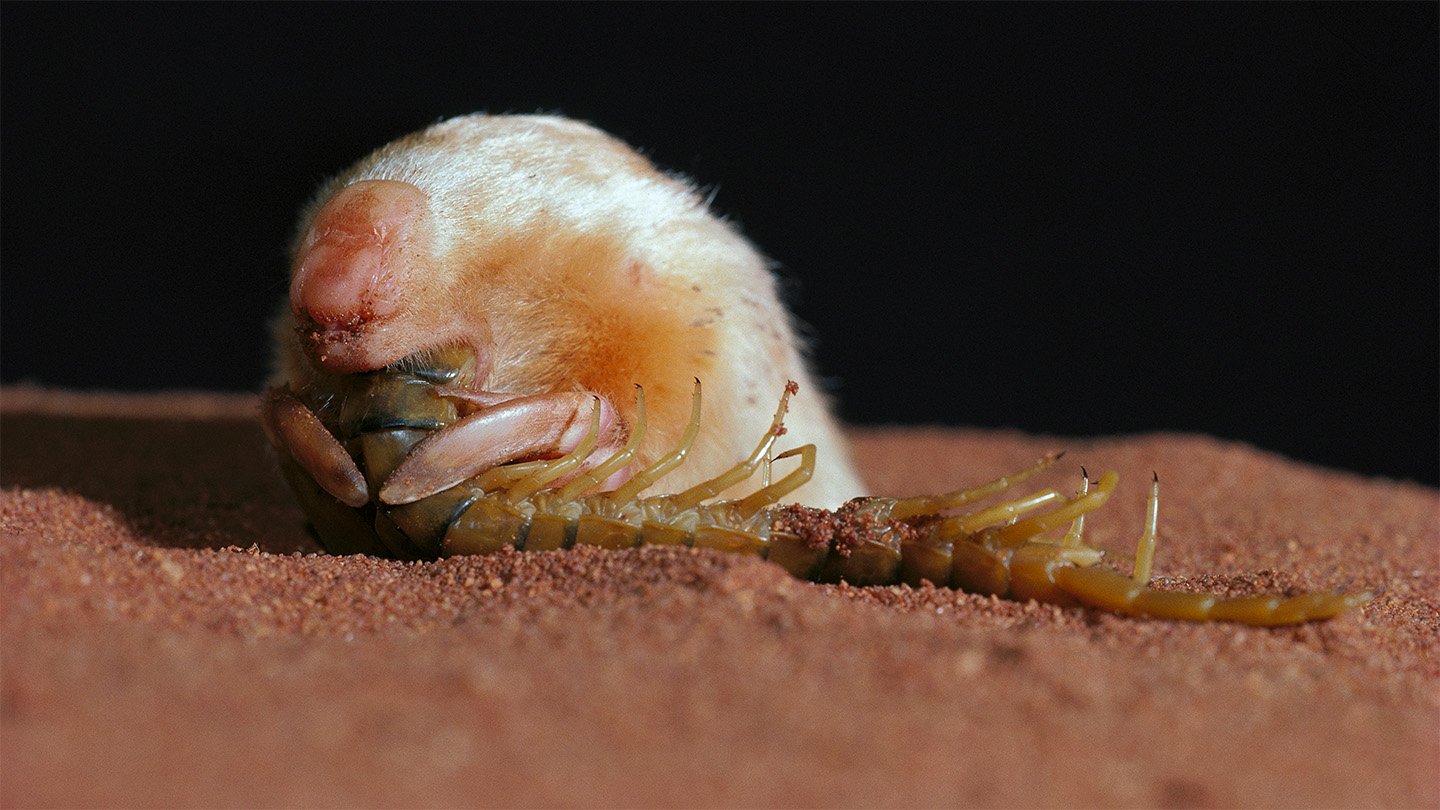Evolving a dig-in-the-dark mole lifestyle comes with radical anatomical changes, making it hard even to guess the animal’s closest relatives. That’s why the true identity of Australia’s most enigmatic and cryptic mammal, the marsupial mole, has been called into question for decades.
The two fit-in-your-hand Notoryctes species are elusive. “I’ve never handled, or even seen, a marsupial mole in my life, and I almost certainly never will,” says Stephen Frankenberg, an evolutionary geneticist at the University of Melbourne in Australia. Sightings are rare. Even in Australia, he says, plenty of people have probably never even heard of them.
The first people living around central Australia’s iconic great red rock domes (now Uluṟu-Kata Tjuṯa National Park) certainly knew of the local mole, which features in their cultural lore. But European settlers and their correspondents oceans away were fascinated in 1888 by reports of “a new Australian mammal.” Opinions varied about whether it was a marsupial.
Now Frankenberg and colleagues have used a frozen sample from the South Australian Museum in Adelaide to see where Notoryctes fits in the animal evolutionary tree. It’s not anywhere near other animals we call moles or even mole-rats.
Notoryctes are true marsupials instead of some not-quites, the researchers confirm January 1 in Science Advances. Their pouch faces backward, probably helpful when mom is almost swimming forward in sandy soil. And these moles don’t dig lasting tunnels but live in dunes or other soils that permit pushing through. Researchers also found an extra hemoglobin gene that might help keep the animals from suffocating in soil.
What kind of marsupial they evolved from was a trickier question to answer because life underground strongly favors certain body changes. The two species of Notoryctes have tapered beanbag bodies with specialized dig-tool limbs and testes that stay in the abdomen instead of descending into some draggy scrotum. (Researchers found genes that facilitate abdominal testes, which other underground specialists also have.)
What the moles don’t have are external ears or working eyes. Instead, their fur-covered face just has a raised pink fleshy “shield” structure like a big button nose on a stuffed animal.
The relatives they left behind in daylight have become today’s bilbies, which are “very rabbitlike,” Frankenberg says, and bandicoots, “more like giant shrews with their pointy snouts.”
Bilbies and bandicoots do not look very much at all like their mole cousins. Yet this new paper is the second big genetic analysis that has found that the moles, bilbies and bandicoots are a group of close relatives.
This group is also a sister group to Tasmanian devils and some other not very molelike creatures, says evolutionary geneticist David A. Duchêne at the University of Copenhagen. It just goes to show how going underground full-time can involve an extreme makeover.
Source link













Leave a Reply